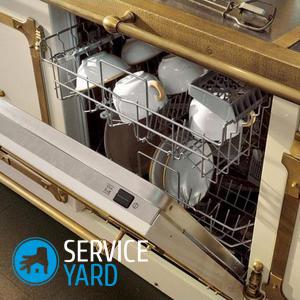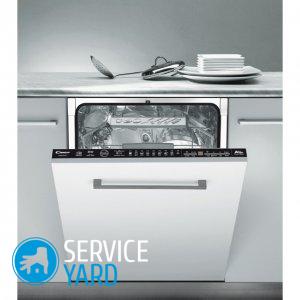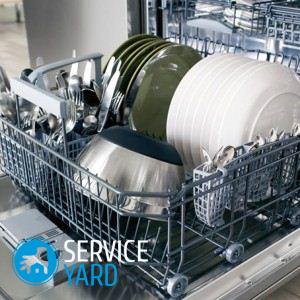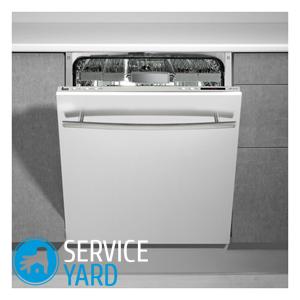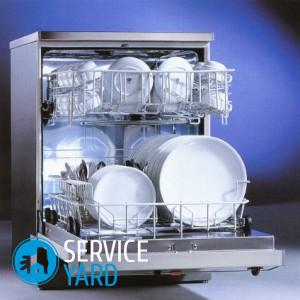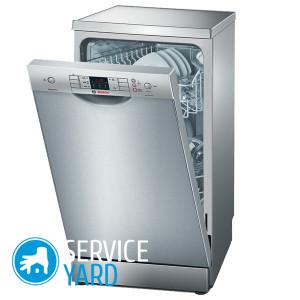Which dishwasher is best?

In the modern world, a lot of equipment is made to help housewives in household chores. There was no exception and washing dishes. This procedure brings little pleasure, and a lot of time is spent, especially if the family is large. In this article we will talk about which dishwasher is better and how to choose it correctly among the many options offered by the market.
to contents ↑Why buy a dishwasher?
Despite the fact that the market is full of offers of similar goods, many are in no hurry to trust their dishes in the hands of this miracle of technology. There are many reasons, and they are the most diverse. But none of those who at least once tried a dishwasher in action did not refuse such a “helper”.
Appointment
As the name implies, this technique can do the dishes, but the best dishwashers can do much more:
- Wash: glass, porcelain, enameled metal, cast iron, non-stick products, plastic.
- Dry the dishes.
Important! Please note that depending on where exactly you plan to use such a technique, the requirements for its device, functions, sizes, and specifications will differ. Read a separate review if you need to pick up a dishwasher to give.
The best dishwashers have:
- Excellent soundproofing functions, so this technique does not deliver at least any tangible discomfort to the residents of the house.
- A varied number of programs.
Important! It is not recommended to place products from the machine for washing: hygroscopic, rapidly oxidizing, non-heat-resistant, susceptible to chemical and mechanical damage to materials. For example, such as: silver, mother of pearl, bone, brass, copper, etc.
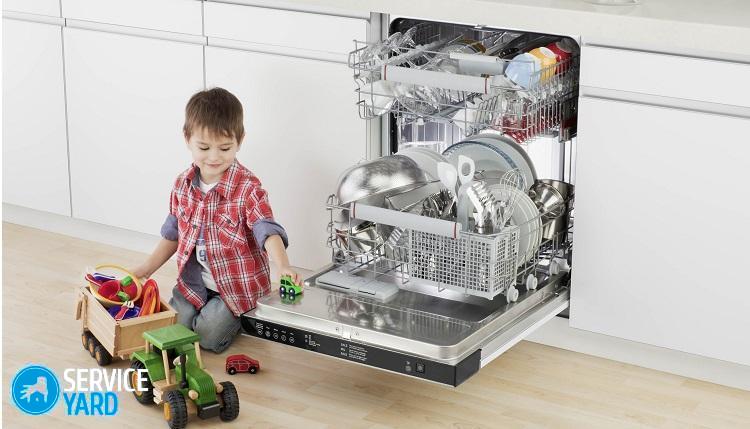
Advantages and disadvantages
Let’s talk about the pros and cons of the presence of such a “helper” in your home you will notice.
Among the advantages are:
- The ability to wash everything in the most hot water, which allows not only to wash the remnants of food, but also to destroy the bacteria that live there.
- No damage from sponges and brushes, as when washing by hand.
- Reduce the time you spend washing dishes. A couple of minutes to set the desired mode, and you can safely go about your business.
- The simultaneous washing of large quantities of dishes, especially important for large families and on holidays.
- No negative effects of water and detergents on the hands.
- Automatic drying without smudges. Here you need to understand in more detail, what type of drying is better for you, since this parameter directly affects the cost of equipment.
- Lack of accumulation of dirty dishes on tables and in the sink.
- Water costs are reduced up to 3 times.
Important! But, like in any other device, there are also disadvantages. In the process of action, it is impossible to change the program, as well as the electricity costs that the machine consumes.
From this it follows that when buying and using, you need to remember such factors:
- The energy that is consumed is spent on working and heating the water.
- Before loading items into the machine, they must be cleaned of large food debris.
- The device requires special detergents, it is advisable to prepare them in advance.
- One cycle in the car takes more time than the same work with hands, so if appliances are urgently needed, it is better to wash them quickly by hand.
General characteristics and principle of operation
The market contains a huge number of different options for dishwashers, which are made for the most diverse needs of users. We will examine in more detail the general functionality of all these devices.
General device
Regardless of the manufacturer, all models have a set of common functions and characteristics:
- Inlet system consisting of: hose, coarse filter and intake valve.
- TEN for heating water.
- The pump and the rotating rocker arms, through which there is a pressure supply of water to the dishes.
- Waste water discharge system.
- Compartments for tools that are necessary in the work: washing, rinsing, controlling the hardness of the water.
- Trays for different types of dishes.
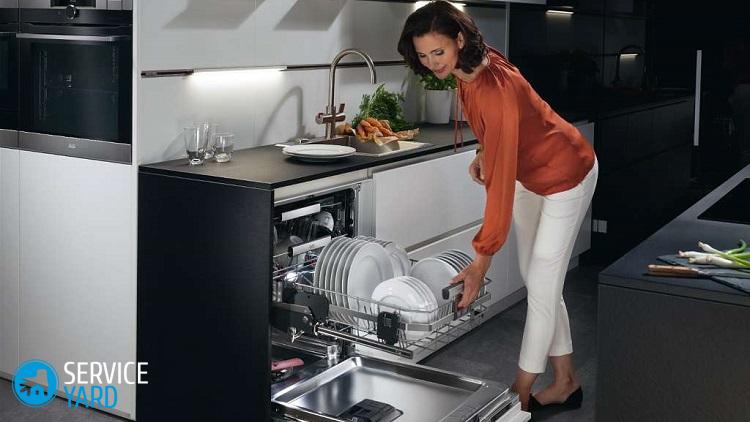
Principle of operation
The operation of the dishwasher is very simple:
- It all starts with the collection and heating of water.
- After - it is pumped through the rocker arms by a pump, which under the action begin to spray water in different directions.
- When the soaking mode is on, the wetted dishes stand for some time, and after that the main process begins.
- All dirty water goes into drainage, rinsing of kitchen utensils and their drying takes place.
to contents ↑Important! Dishwashers require the use of a range of special consumables for washing and softening water. To understand the full variety of this type of household chemicals, our dishwasher rating.
Varieties of Dishwashers
In order to choose the best dishwashers from a variety of options, you need to know what kind of equipment is, how they are arranged and how they differ.
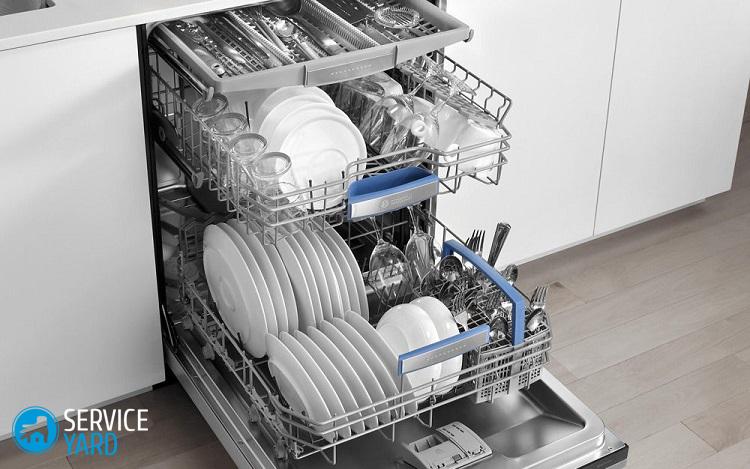
Application Classification
The most extensive classification divides all devices into 2 categories: industrial and domestic type.
Industrial
Such models are designed for restaurants, clubs and other catering establishments. They are divided by type of loading: dome, tunnel and frontal. The first 2 types are intended for large establishments and large kitchens. The latter is more convenient for bars.
Household
Domestic dishwashers have acquired a more extensive classification during the development period. They are distinguished at once by several parameters: by size, by the method of installation.
Size classification
The size of the dishwasher chosen largely depends on the size of the kitchen. There are several types:
- Full-size freestanding. The standard width of such a device is about 60 cm and it is designed for 12-14 sets of dishes.
- Narrow. The width here is 40-45 cm, and the capacity varies from 8 to 10 sets.
- Compact dishwashers. This view is a desktop device, and contains no more than 7 sets.
In another article, we spoke in detail about sizes of dishwashers.
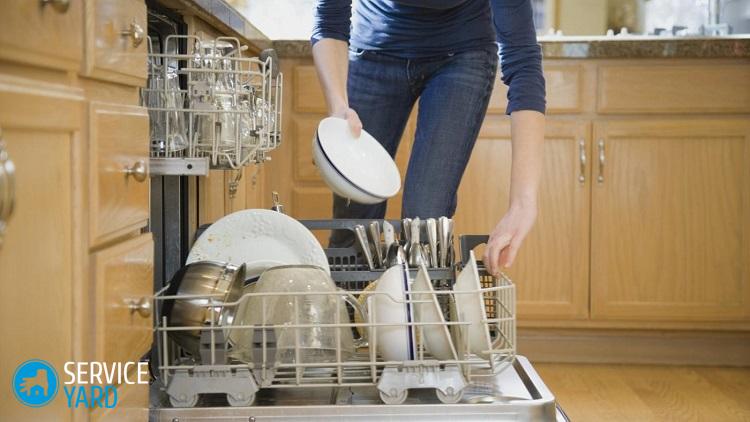
Classification by installation method
Both in size and in the installation method, the choice largely depends on the size of the kitchen. The following varieties are distinguished:
- Non-built-in machines - after installation, they take up their place and look like a separate household appliance.
- Partially recessed. Such devices stand out among other furniture only by the control panel, but otherwise, it does not take up too much space.
- The best dishwashers are believed to be recessed. Such cars do not violate the general interior, as they hide under furniture, under the countertop or sink. The dashboard of such a device is located on the door itself - on top.
Important! You can also use the dishwasher even without running water. It is enough to fill in the water and activate the mechanism. This is true for areas where the water supply is intermittent. In addition to all this, the market offers 2-in-1 combo options. For example, a gas stove and dishwasher, etc. This option will cost less than when buying devices separately.
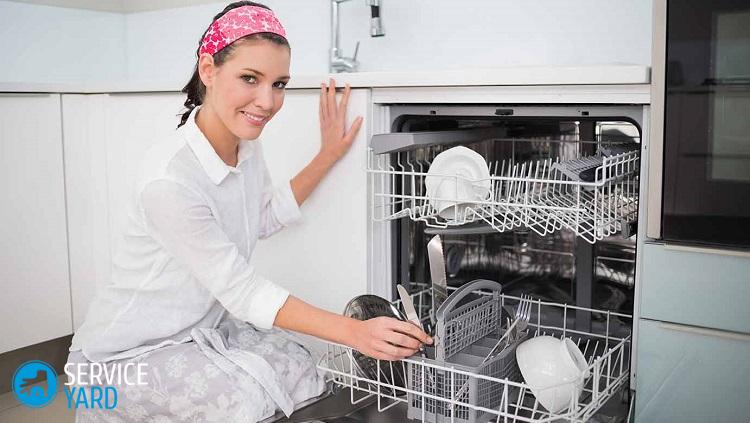
Important! Do not forget that the dishwasher must be properly connected to utilities. Of course, you can use the services of a wizard, but you can do this yourself. Find out the connection rules in a separate article "Installation of the dishwasher".
to contents ↑
Design Features
Choosing the best dishwasher for yourself, consider not only the design and type of installation, but the most convenient functionality and individual built-in elements. Let's talk about them in more detail.
Dish baskets
Typically, baskets are complemented by:
- Holders for cups, small plates, cutlery to ensure their safety.
- Adjustment of height of fastening. This is done in order to ensure the loading of even large diameter plates and other kitchen appliances.
Drying type
There are 2 types of dryers, and the decision which is best for you should be based on a needs analysis. For example, such as speed or cost savings.
What options are available:
- Condensation drying is a common version on budget devices. The principle of operation is based on an increase in temperature, due to which moisture evaporates from the dishes. After - it settles on the cold walls of the washing chamber and is removed by a general drain.
Important! This method takes a lot of time, but is considered the cheapest option.
- Turbo dryer - less commonly used for installation in devices. The principle of operation is to blow a warm stream of air. Such a mechanism reduces the time spent on work, but at the same time increases the power consumption and cost of the machine.
Filter
At both ends of the water supply / pumping system are filters that can become clogged with food debris and other particles. That is why manufacturers recommend cleaning all dishes from residues.
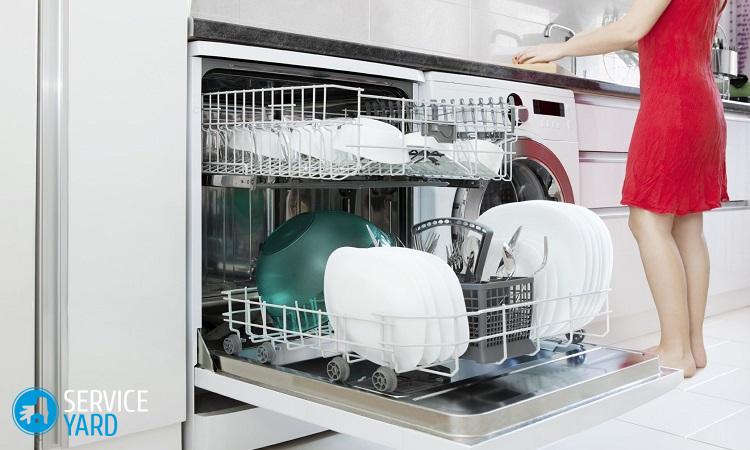
Extra options
Each manufacturer, making his device, supplements it with various parameters for ease of use, as well as its safety. Among them:
- Amplification of sound insulation. Reduces the noise level of the device to 47-57 decibels.
- Crusher for waste - allows not particularly bother with the removal of food residues, as well as cleaning the device after work.
- A variety of programs. Varies from 4 to 12 options. Among them: soaking, raising or lowering the temperature, additional washing, etc.
- Water level sensor. It allows to avoid leakage during overflow, and even gives an audible warning signal in such a situation.
- Electronic display.
- Other convenient little things - protection from children, delayed start, etc.
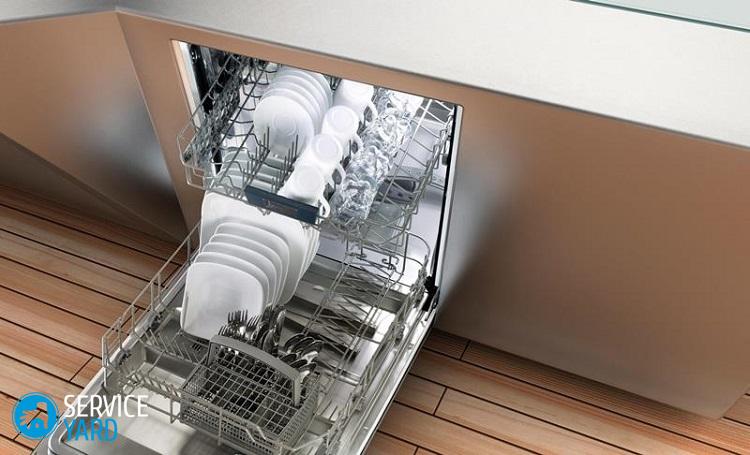
How to choose the right one?
Before deciding on a specific model, you need to understand in detail what you need. All the parameters by which the selection will take place can conditionally be divided into 2 categories: by design and by technical capabilities.
By design
Interior features, the size of the kitchen and the number of dishes will tell you which model is better to take: desktop or built-in, full-size or small-sized. A few selection tips are listed below:
- A full-size machine with a width of 60 cm - built-in or standing separately, is suitable for a large spacious room. Such a purchase will be simply indispensable for a large family.
- A narrow device with a width of 45 cm (minimum size 35 cm) is the best choice for small rooms or for a small family.
- Compact or in another way - a desktop machine, suitable for those who rent housing or are not able to install the device on the floor. This type can be compared with a microwave in size. The smallest has dimensions 45x55x45 cm.
- The non-built-in option is more suitable for a kitchen whose furniture is not suitable for embedding additional equipment.
- The most profitable option, for those who change furniture in the kitchen, will be a fully built-in dishwasher.
Important! For those who chose the built-in appliances, it is very important to measure the dimensions in advance and relate them to the capabilities of the rest of the furniture. Otherwise, there is a risk of not putting everything in one line.
Technical indicators
The most common and most important characteristics are:
- Energy consumption;
- temperature capabilities;
- amount of water consumed.
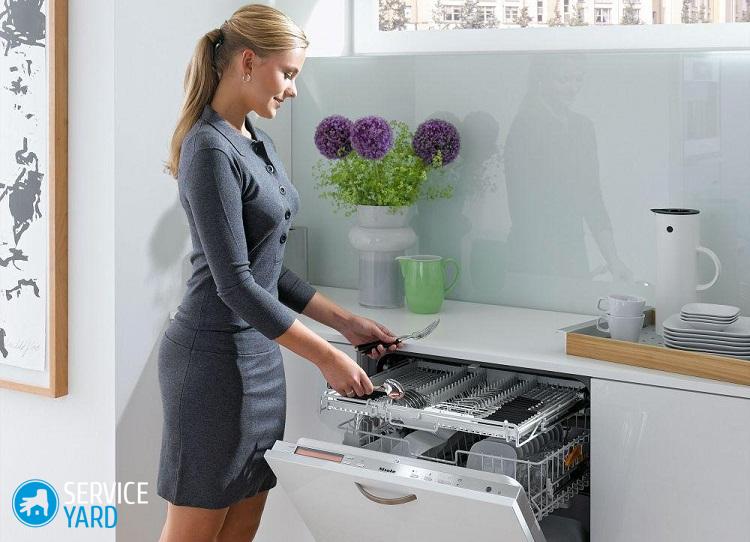
Energy consumption
The most important indicator is, of course, the energy consumption of the equipment. Energy classes in dishwashers are indicated in Latin letters from A to G. Each of them indicates the energy consumption of the device.
The first three letters indicate the least expensive models:
- A - class consuming from 0.8 to 1.05 kW / h per cycle.
- B - consumes from 1.6 to 1.09 kWh per cycle
- C - consumes from 1.1 to 1.49 kW / h per cycle.
Important! Classes F and G are the most expensive and are indicated mainly on obsolete models.
Amount of water
On average, the parameter is in the range from 14 to 16 liters per passage of one cycle at a temperature of 60 degrees.
Temperature indicators
The most popular in such devices are 3 modes:
- Intensive - the temperature reaches 75 degrees when the water is heated.
- Careful - up to 40 degrees, in some models up to 30.
- Quick rinse without heating.
Important! The best dishwashers have a more advanced temperature function, but the cost of such devices is higher than that of less functional models.
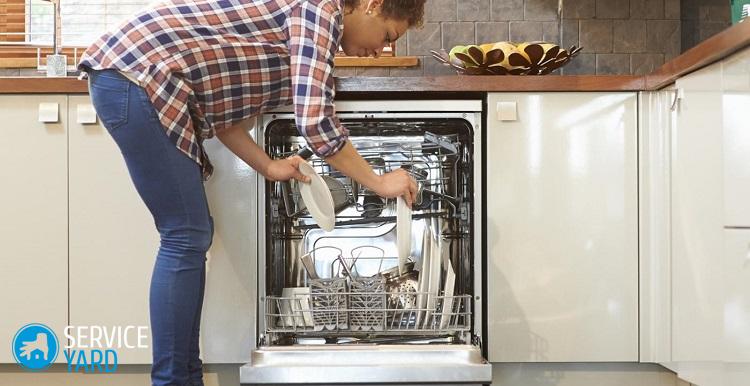
to contents ↑
Manufacturers
An equally important point in the selection is the manufacturing company. In this section we will discuss the list of the best manufacturers, as well as discuss which dishwasher which company is best for you.
Important! Among the most persistent manufacturers of kitchen and not only “helpers” stand out: Bosch, Veko, Candy, Siemens, Hansa, Zanussi, Whirlpool, Hotpoint Ariston, Ikea, Lg, Miele, Samsung.
Bosch
This German brand still holds strong leadership among technology - both industrial and domestic:
- The most popular models with a width of 45 cm are: Bosch Super Silence SPS 69 T 72 Ru, Bosch SPV 53M10, Bosch SPV 40E10.
- The best 60 cm models are called: Bosch SuperSillence, Bosch SMS 53 N 12 Ru.
- Among the compact models stand out: Bosch ActiveWater Smart SKS 62 E 88 Ru, Bosch ActiveWater Smart SKS 40 E 22 Ru, Bosch ActiveWater Smart SKS 51 E 88 Ru.
Important! Also popular are models from other manufacturers.
- Among compact dishwashers, these are Whirlpool ADG 155, Siemens SC 76 M 530, Zanussi ZSF 2415, Candy CDCF 6S-07.
- Among the full-size ones are Whirlpool ADP 860 IX, ZANUSSI ZDF 2010, SIEMENS SN 26 V 893 EU, CANDY CDP 6653.
- Among the narrow models, Hotpoint-Ariston LSF 723, BEKO DIS 5831, Miele G4700 SCi, BEKO DSFS 1530 W, Siemens SR26T897RU, BEKO DSFS 6831, Siemens SR 66T090 can be distinguished.
to contents ↑Important! Each of these machines is in its own way good and designed for different needs - some are more economical, others are more functional, someone has the most reliable protection against the most unforeseen situations. Which one to choose is up to you, based on what functionality is most suitable.
Stock footage
An unequivocal answer to the question of which dishwasher is better not, and is unlikely to ever appear, because it is from the needs of the user and his capabilities that it is fully decided what suits him, and not someone else.




